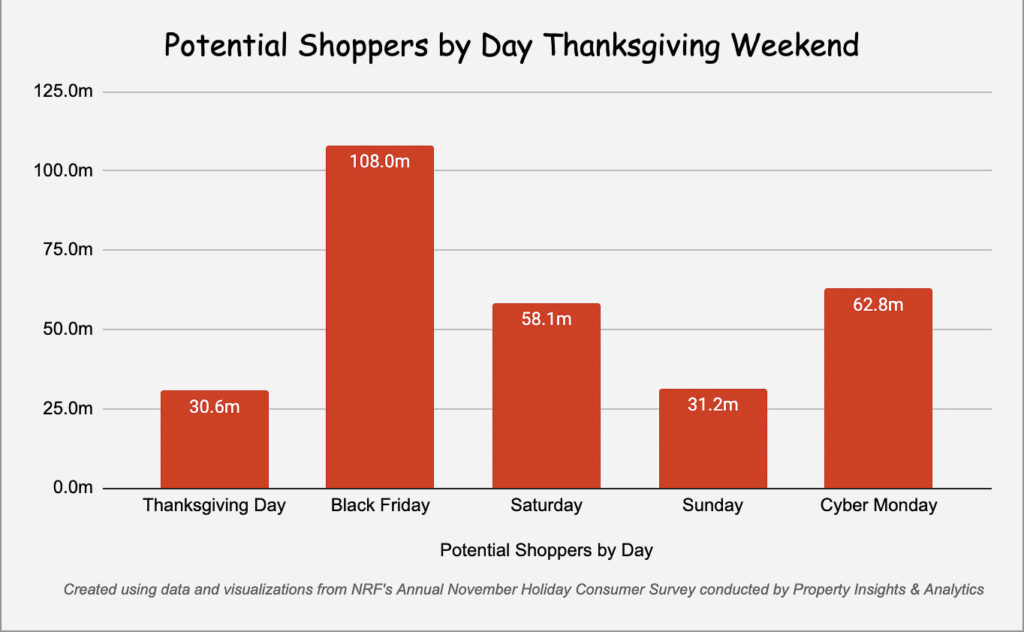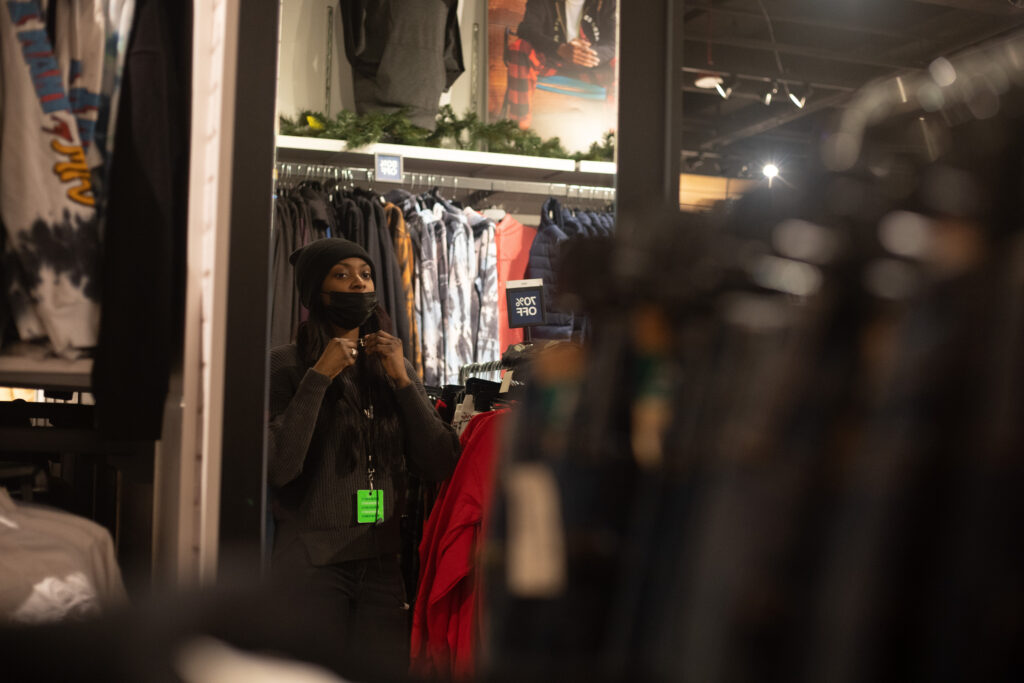Retail Workers on the Frontlines
Stories from the lives of Brooklyn retail associates during a global pandemic
By Anthony Medina

Retail work culture has been forever altered by COVID 19. The pandemic shook what was life in New York City. Two years later the nation continues to grapple with the impact of the virus. From the countless stories of doctors and nurses and other health care workers who fought the spread of the virus on the front lines, to the great toilet paper hoarding fiasco in the summer of 2020, and more recent delays for testing, personal sacrifices have been made by all.
Next to frontline workers, retail workers who man the cashiers and maintain the sales floors at big chain stores that sell socks, shirts, shoes and other everyday items are just as vulnerable to the physical and social impact of the pandemic and in some ways provide services just as essential to health care workers.
“It’s been a tough time for retail workers in the U.S. and across the globe,” said Retail, Wholesale and Department Store Union President Stuart Appelbaum in a statement last fall. “Besides the risks to the health of workers and their families that’s hung over retail during the entire pandemic, violence, abuse, and harassment on the job skyrocketed.”
The physical and mental abuse retail workers face from customers remains an underreported issue, though widely portrayed on social media sites such as Facebook and Tik Tok. New examples appear almost daily on social media and less frequently in the mainstream media in the past year. The Atlantic recently reported on the surge in shoplifting and the related risk to people who work in targeted stores.
Sam Clark, a California retail worker at the sporting goods store Big 5 in Modesto made a Facebook group with her roommate after being bashed in the face by a customer last year in May. Trader Joe’s employees in NYC were slashed last July by a customer after being asked to leave for refusing to wear a face mask.
Heightening the pressures for retail workers is the fluctuating job market. In 2019, New York City’s retail sector comprised 32,600 businesses that provided 344,600 jobs with 214,600 city residents working in retail, according to the New York State Comptroller’s office. By August 2020, The comptroller’s office found employment in groceries and pharmacies returned to pre-pandemic levels, but other retail subsectors including clothing and accessories remained at below levels from last year.
The return to pre-pandemic holiday shopping put even more pressure on retail worker. An annual survey released by the National Retail Federation and Prosper Insights Analytics estimated nearly 2 million more shoppers were expected to shop from Thanksgiving to Cyber Monday this year and based on November’s retail sales, the 2021 holiday season is on the path to record breaking spending numbers despite the pandemic.
The risk of contracting Covid has grown as the Delta and Omicron variants spread around the globe. According to the CDC, people working in high-volume retail environments, including at points of sale and other positions within stores remain at a medium risk of exposure. Most of the retail workers, especially those living in the populated New York City, did classify in the High or Very High risk category, including those working in larger stores that also sell grocery items like Walmart and Target.
A Map of Brooklyn Highlighting Gateway Center and Kings Plaza Shopping Center where the stories of three retail workers take place. Gateway Center and Kings Plaza exists roughly 7 miles away from each other on the Belt Pkwy using Google Maps as a means to mark the locations and surrounding areas of both shopping centers.
This photo essay shares the lives of three Brooklyn natives: Cheyann Harris, David Resto and Joshua Talavera who’ve experienced the hardships of working in retail throughout the pandemic. Their struggles both inside and outside of work reflect what many retail workers face every day all the while addressing the new challenges that spawned from the pandemic and trying to achieve their goals.
There’s a sort of scary nonchalant attitude most of them had with the facts of covid and how it spread. Almost like they’re aware of all that’s happening and the consequences, but their responsibilities weighed heavier than everything else.
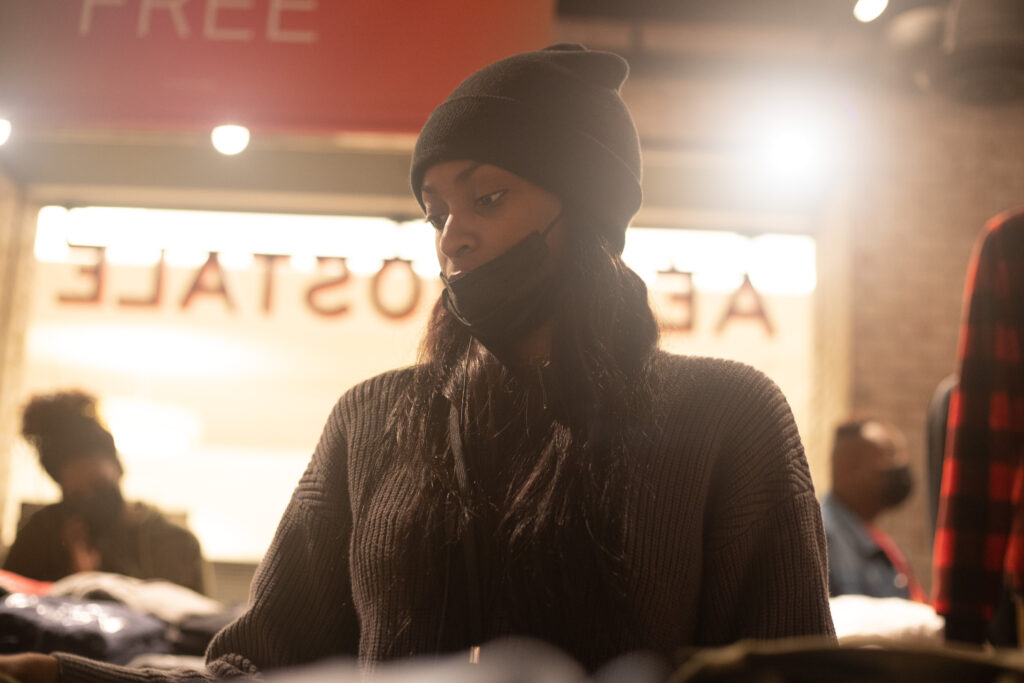
“This is just a stepping stone. This is something that’s putting money in my pocket until I get to where I want to be and that’s why I kept working here throughout grad school.”
Cheyann Harris
Cheyann Harris, 24, finances her education as a student at the Craig Newmark Graduate School of Journalism at CUNY through working in retail at the Kings Plaza Shopping Center in Brooklyn, New York. The plaza, which opened in 1970, houses dozens of retail outlets and department stores.
Harris spent much of her life as a student juggling between her school work and her responsibilities at the Aeropostale in Kings Plaza for about 5 years. Harris has completed two of the three required semesters, both done virtually. She is studying Arts & Culture journalism while honing her skills in video storytelling.
“I’ve had so many mental breakdowns because I had to work late and go home to write a paper or go home and study for something. It’s just frustrating because those were the times that I was like, ‘damn, I wish I could afford the luxury of not having to worry about anything.’ But I feel like it also builds character,” Harris says.
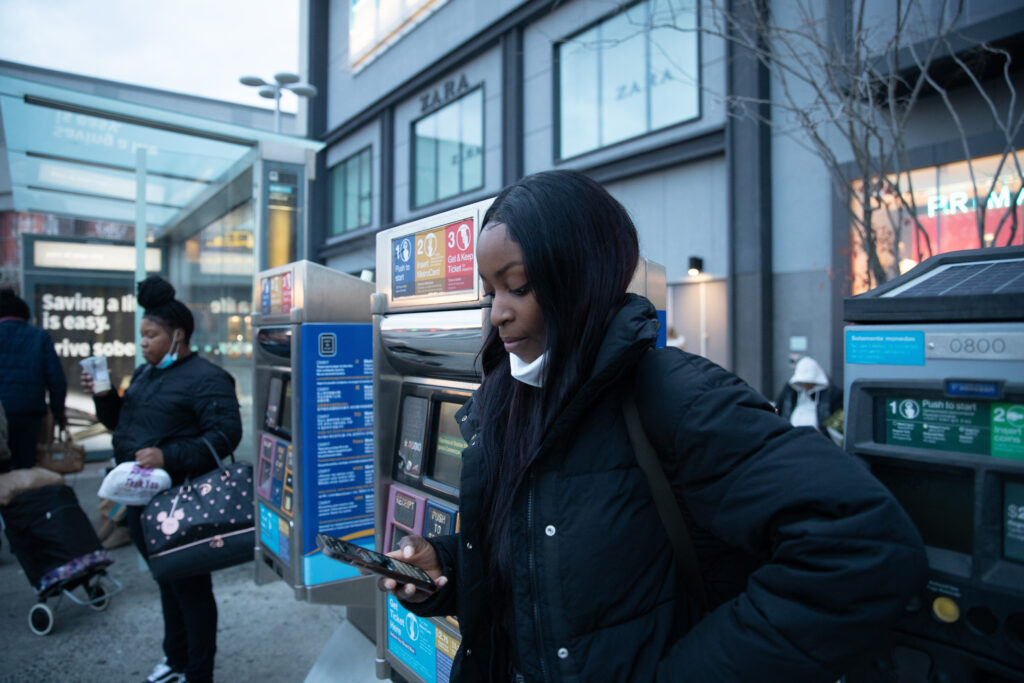
After working an 8 hour shift, Cheyann begins her commute to her night class at the Craig Newmark Graduate School of Journalism at CUNY. 
Cheyann Harris on her way to the Craig Newmark Graduate School of Journalism at CUNY. 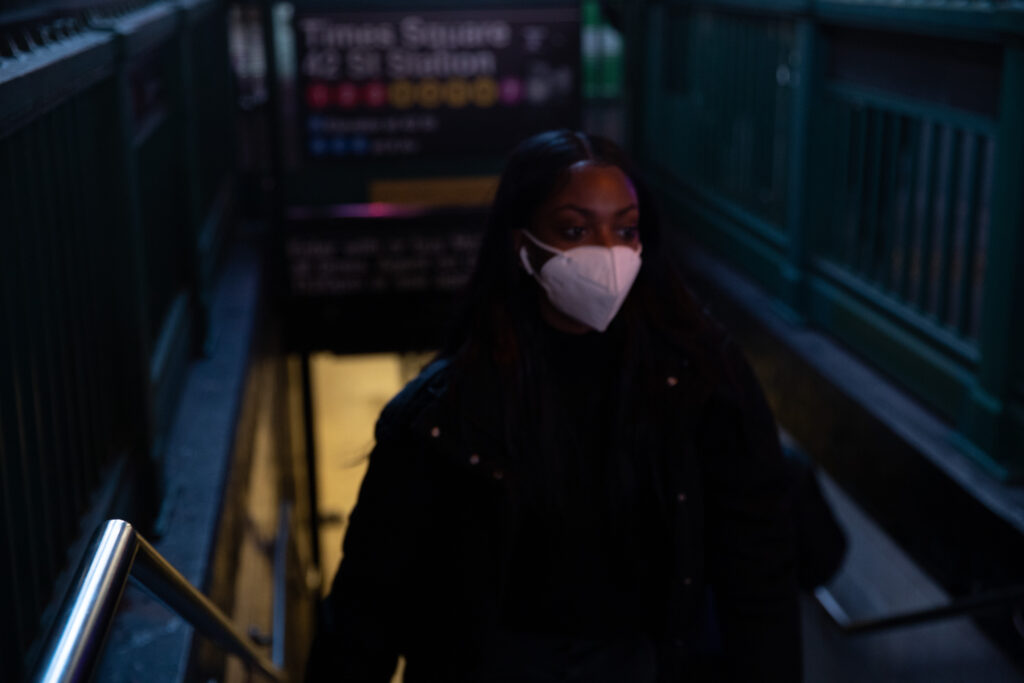
Cheyann Harris waits for the 3 train to travel to 42nd street and get to her night course. 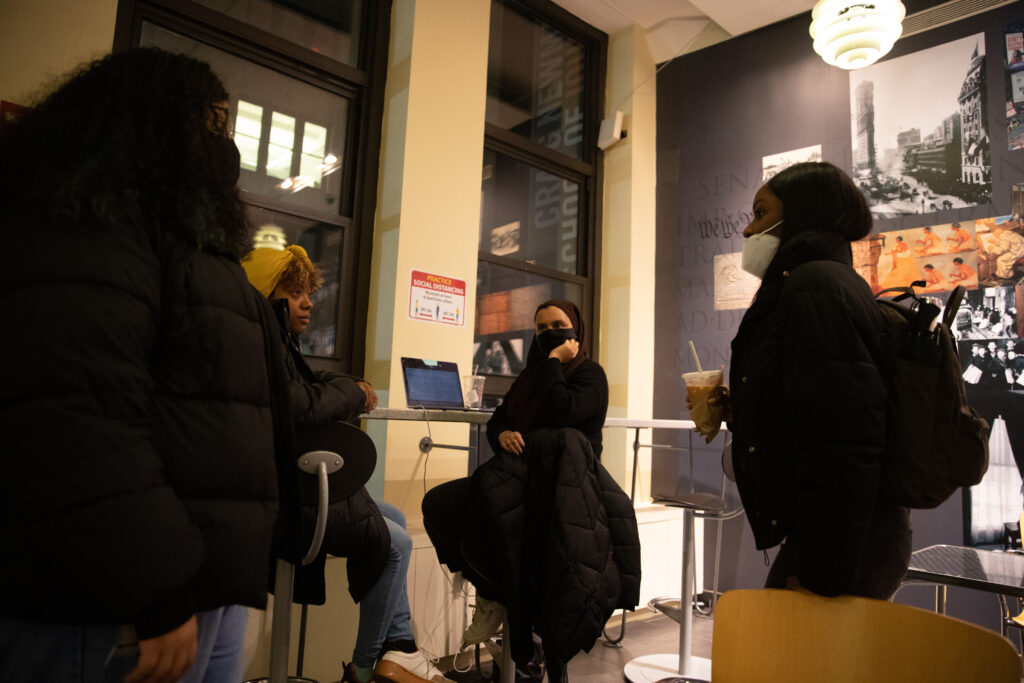
Cheyann talks with friends and classmates inside the Newmark J School.
On Thursday, Dec. 2, immediately after leaving her job after an 8a.m. to 4 p.m. shift, Harris darts to the B46 bus to make it to her 6 p.m. class. The nearly 20 minute wait to get on the bus is the only obstacle stopping her from then transferring to a 2 train to 42nd Street Time square. A sense of urgency carries Harris from one form of transportation to the next, eventually getting to 42nd street with less than ten minutes left to spare to grab a cup of coffee from McDonalds.
Being a full-time retail worker and a grad student was a challenge. Trying to finish an assignment due at midnight the next day right after returning home from a closing shift made balancing her responsibilities a challenge of its own, all while trying to cope with mask mandates and social distancing.
Harris left her retail job after successfully graduating from the Newmark J School in December to work at Fortune magazine as a social media producer.
“I differ from a lot of people in retail because the work environment in this store specifically wasn’t toxic to me. It wasn’t hostile,” Harris says. “I think I got along with my coworkers and my managers well, so it wasn’t a bad situation. It was just stress from schoolwork. So, I’m leaving on a good note. I’m leaving feeling good about the past five years.”
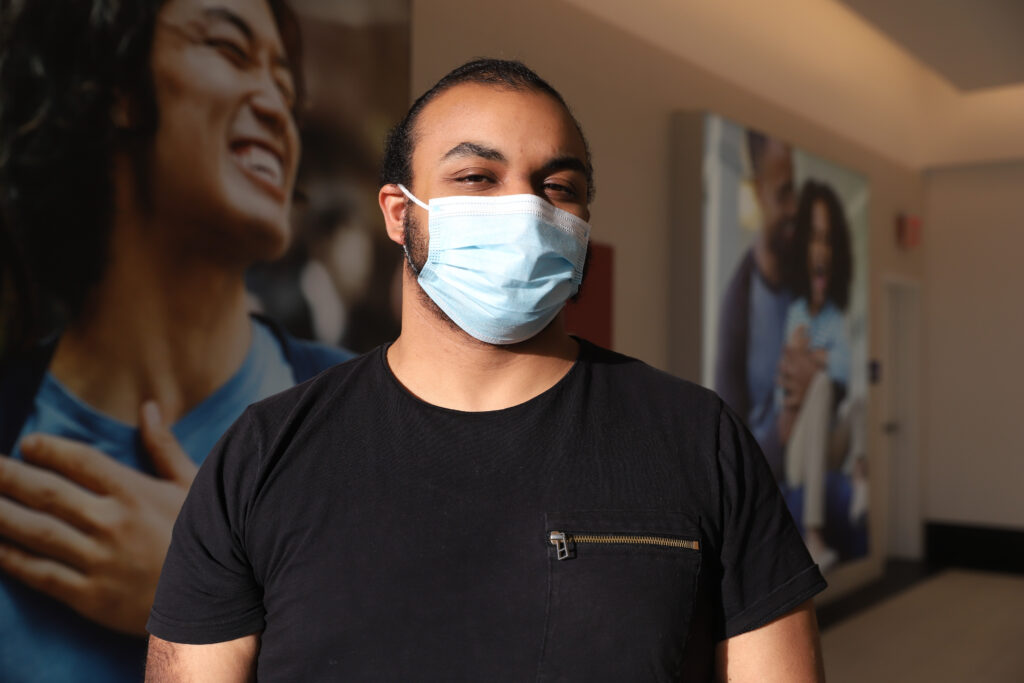
“I think what the hidden agenda, which a lot of people don’t really pick up on, was that we provided that sense of normalcy, and a break the monotony of staying home, which is really why I think retail workers are essential, because they gave you something to do, gave you something to look forward to.”
Joshua Talavera
Joshua Talavera, 28, known to most as Josh, works as one of three managers at the Burlington in Kings Plaza. He has worked at the location since it opened in 2018. He splits his time between other Burlington locations when requested. With over 5 years of experience both in and out of consumer retail, Josh is a career retail worker.
Full-time work in the retail environment and coming home to his family and girlfriend, who also works as a manager in retail, made Josh worry about how his health impacted the people around him, but he continued to do the job day after day.
On Black Friday in 2021, as in many years prior, Josh was hard at work. Burlington takes up an entire floor, and hundreds of holiday shoppers stood in a line that felt never ending. The line for the cashier almost wrapped around an entire portion of the store.

Joshua Talavera on the fifth floor of Kings Plaza specifically dedicated to Burlington. 
Joshua Talavera coming from behind the registers and on the sales floor inside the Burlington at Kings Plaza, Brooklyn, New York, Friday, Dec, 26, 2021. 
Joshua Talavera directs customers on the line to the cashiers while helping on the sales floor inside Burlington. 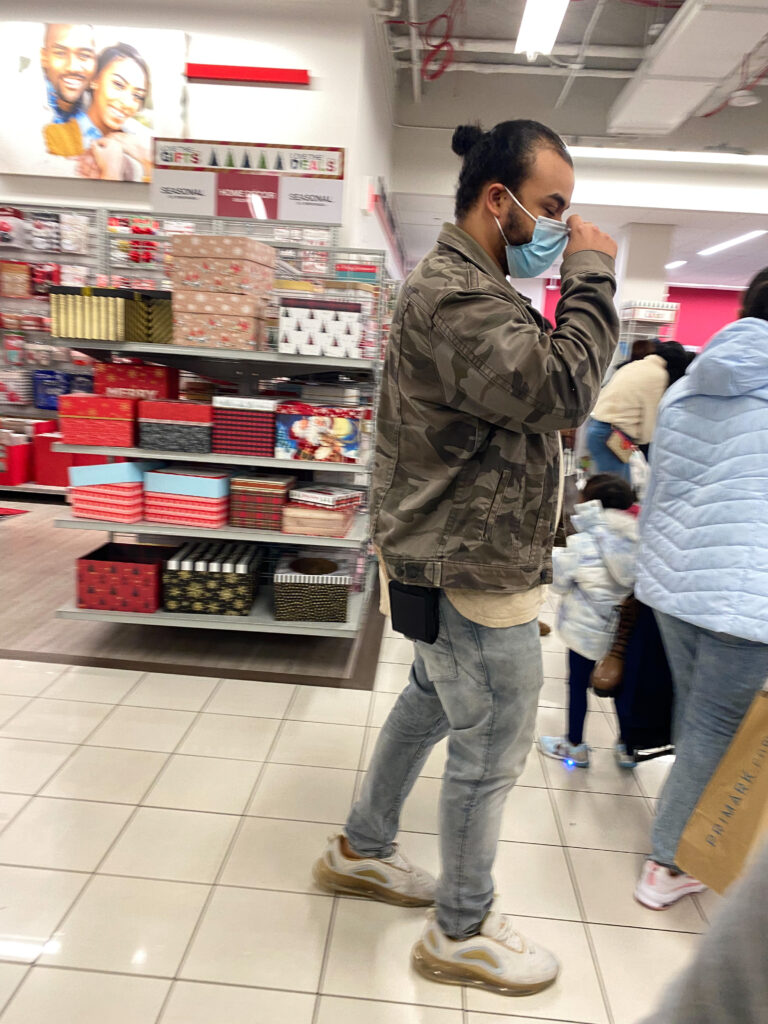
Joshua Talavera on the sales floor at Burlington.
Most of the customers wore masks, but many were unmasked. Maintaining social distancing wasn’t possible with the number of shoppers. Store associates closely directed the flow of customers on the check-out line to prevent exits from being blocked.
Josh’s name was often called on the PA system as he moved from the sales floor to the registers to assist. Working alongside a couple of other store managers, Josh’s speed and efficiency was evident to everyone.
“It’s kind of hard for us to maintain, you know, certain standards of health and safety when you know, at its core, the people that you’re trying to help protect, don’t follow the rules,” Talavera said. He told the story of working on hot days in the store last summer without an H vac system.
As the months progressed there were fewer unruly customers. But many continued not to practice social distancing even as news coverage of the risk to retail workers increased.
“After going through a period in time, where the only interaction you have is with the people in your house, or people you see on a screen, or people you can see through a video camera, people were kind of subconsciously craving that human to human interaction again, which is the reason why a lot of people when they find out stores are reopening took the opportunity to stand online in the heat for an hour and a half,” Josh added.

“It doesn’t matter if I’m making 50k a year or not, it’s just that you don’t want to work in a stressful environment even though you’re making that much money. At the end of it, if you’re working in an environment that’s stressful, it’s not going to make you want to go to work.”
David Resto
David Resto, 27, works as a stockroom manager inside the PC Richard & Son at Gateway Center in East New York, Brooklyn, for five years. He organizes the stockroom, unloads trucks delivering new merchandise, and helps customers bring their purchases to their cars. He helps deliver large kitchen appliances such as stoves – all for $17 an hour.
“I want to make sure that my mom is okay,” David says. “Even if I decide to stay in this house or I move, I have to make sure that she’s stable and she’s able to have money for medication and stuff so I don’t have that worry that anything bad is going to happen when I’m not there.”
Resto is planning to move out of his childhood home in East New York. A renovated women’s shelter next to his home has caused quality of life issues for years. Some of the shelter’s residents leave garbage in front of Resto’s home and a scaffolding erected outside the shelter extends to the front of his home.

David Resto lifts a large kitchen appliance onto a dolly while at work at the P.C. Richard & Son at Gateway Center in East New York, Brooklyn, Wednesday, Dec, 8, 2021. 
David Resto moves stock to better organize the stock room and make space for new products inside P.C. Richard & Son. 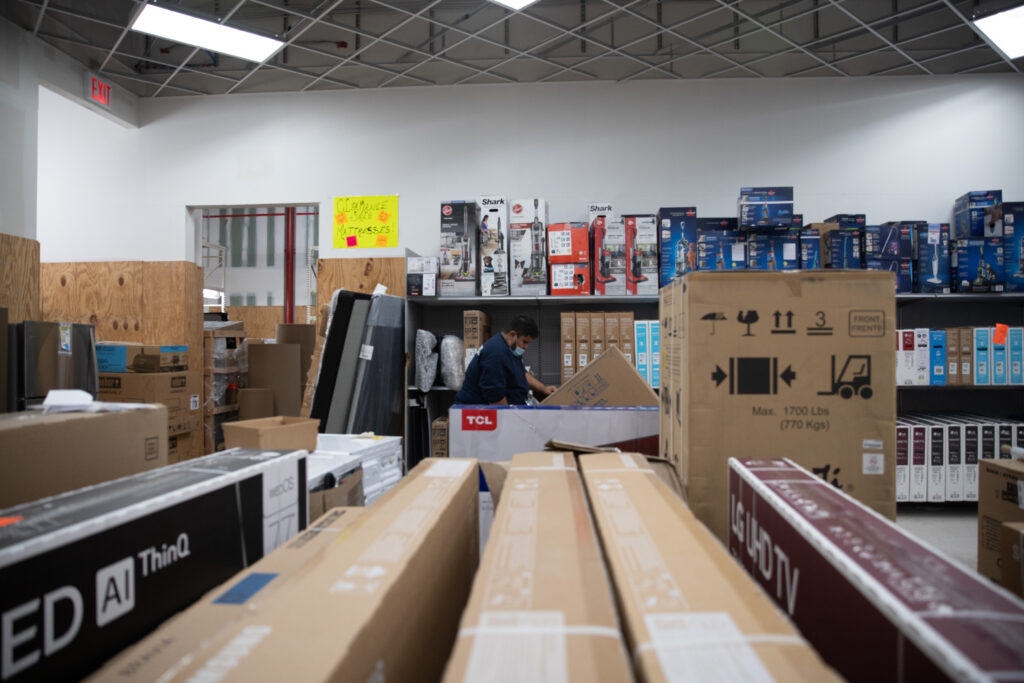
David Resto lifts a large kitchen appliance onto a dolly while at work at the P.C. Richard & Son. 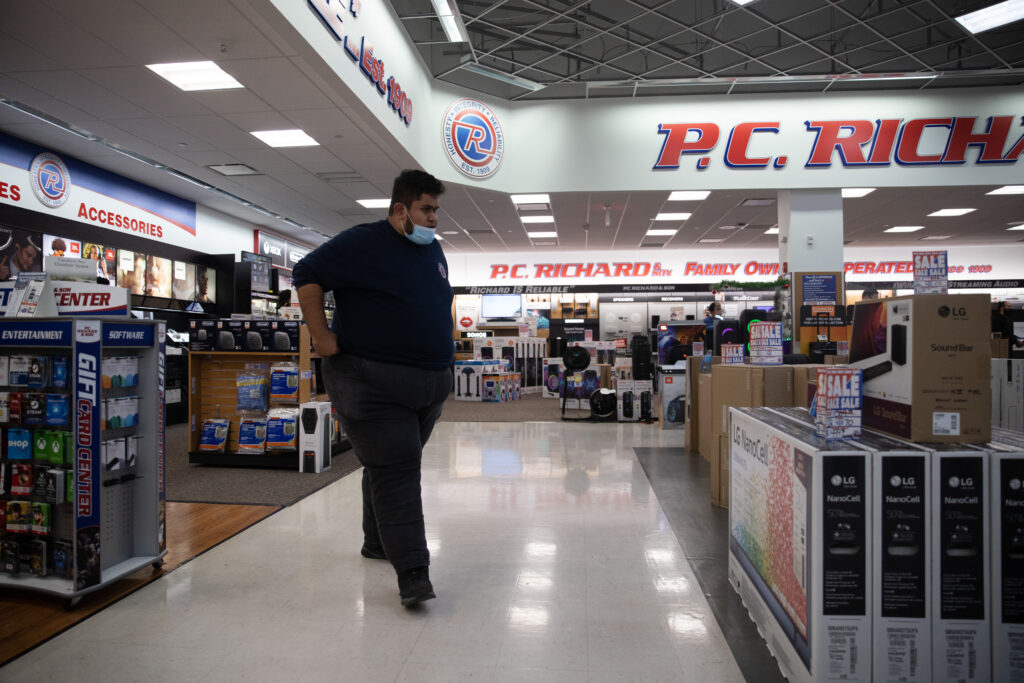
David Resto walking through the store at P.C. Richard & Son. 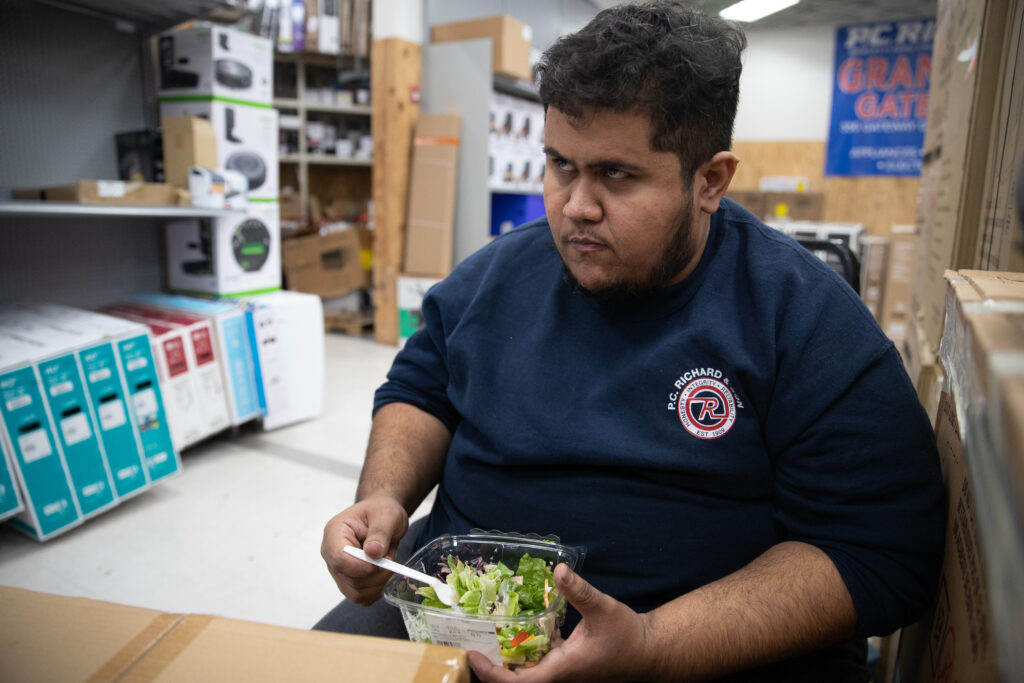
David Resto eats his lunch when he hears his name being called over the P.A. system in P.C. Richard & Son.
On Wednesday, Dec, 8, Resto finishes putting new merchandise unloaded from the truck earlier into his shift. He lifts a kitchen stove onto a dolly with a minimum of effort and moves it to the other side of already stacked appliances in the middle of their storage/clearance section.
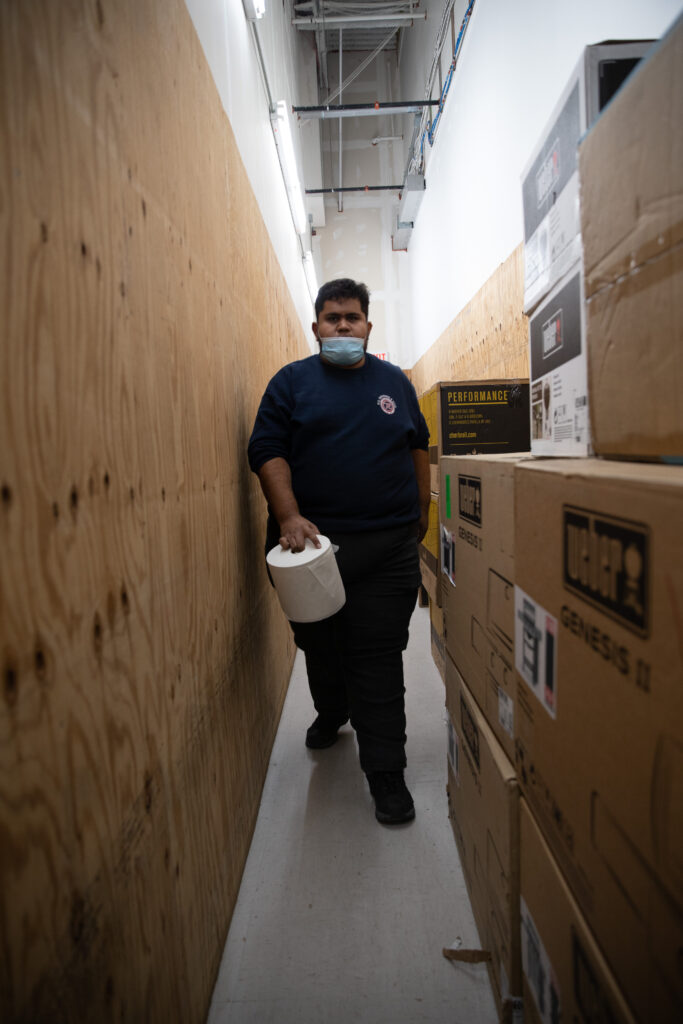
Employees are still required to wear their masks. After a slow holiday season for the store, boxes of air conditioners are stacked where clearance items are normally kept. Safety and customer interaction was easier when the store reopened because “not many customers showed up.”
Still, there are many subtle things about his job that haven’t changed as the pandemic wears on.
“I don’t mind when I’m testing a TV and you want to see what I’m doing, but sometimes these customers want to come in and watch right on top of you to see what you’re doing and it’s kind of nauseating,” Resto adds. “They don’t understand that this Covid thing is still going on. We don’t know if you’re wearing masks, we don’t know if you’re keeping your hands sanitized.”
